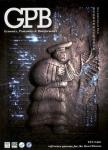Model-based Comparative Prediction of Transcription-Factor Binding Motifs in Anabolic Responses in Bone
Model-based Comparative Prediction of Transcription-Factor Binding Motifs in Anabolic Responses in Bone作者机构:Departments of Biomedical Engineering/Anatomy and Cell Biology Indiana University-Purdue University Indianapolis Indianapolis IN 45202 USA Division of Biostatistics Department of Medicine Center for Computational Biology and Bioinformatics Indiana University School of Medicine Indianapolis IN 46202 USA School of Computer Science and Technology Harbin Institute of Technology Harbin 150001 China Musculoskeletal Disease Center JP Pettis Memorial Veterans Administration Medical Center Loma Linda CA 92357 USA
出 版 物:《Genomics, Proteomics & Bioinformatics》 (基因组蛋白质组与生物信息学报(英文版))
年 卷 期:2007年第5卷第3期
页 面:158-165页
核心收录:
学科分类:0710[理学-生物学] 1001[医学-基础医学(可授医学、理学学位)] 07[理学] 071007[理学-遗传学] 0714[理学-统计学(可授理学、经济学学位)] 0703[理学-化学] 0701[理学-数学] 0812[工学-计算机科学与技术(可授工学、理学学位)]
基 金:National Institutes of Health,NIH National Institute of Arthritis and Musculoskeletal and Skin Diseases,NIAMS: R01AR050008
主 题:microarray transcription-factor binding motif mechanical loading bone morphogenic protein ant algorithm
摘 要:Understanding the regulatory mechanism that controls the alteration of global gene expression patterns continues to be a challenging task in computational biology. We previously developed an ant algorithm, a biologically-inspired computational technique for microarray data, and predicted putative transcription-factor binding motifs (TFBMs) through mimicking interactive behaviors of natural ants. Here we extended the algorithm into a set of web-based software, Ant Modeler, and applied it to investigate the transcriptional mechanism underlying bone formation. Mechanical loading and administration of bone morphogenic proteins (BMPs) are two known treatments to strengthen bone. We addressed a question: Is there any TFBM that stimulates both "anabolic responses of mechanical loading" and "BMP-mediated osteogenic signaling"? Although there is no significant overlap among genes in the two responses, a comparative model-based analysis suggests that the two independent osteogenic processes employ common TFBMs, such as a stress responsive element and a motif for peroxisome proliferator-activated receptor (PPAR). The post-modeling in vitro analysis using mouse osteoblast cells supported involvements of the predicted TFBMs such as PPAR, Ikaros 3, and LMO2 in response to mechanical loading. Taken together, the results would be useful to derive a set of testable hypotheses and examine the role of specific regulators in complex transcriptional control of bone formation.



